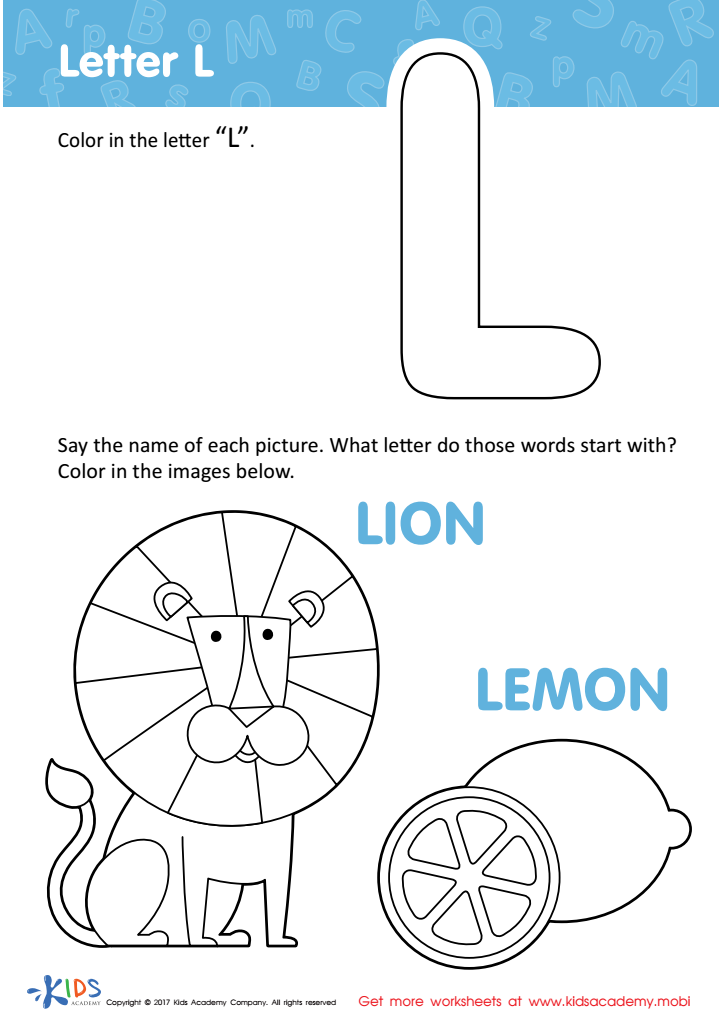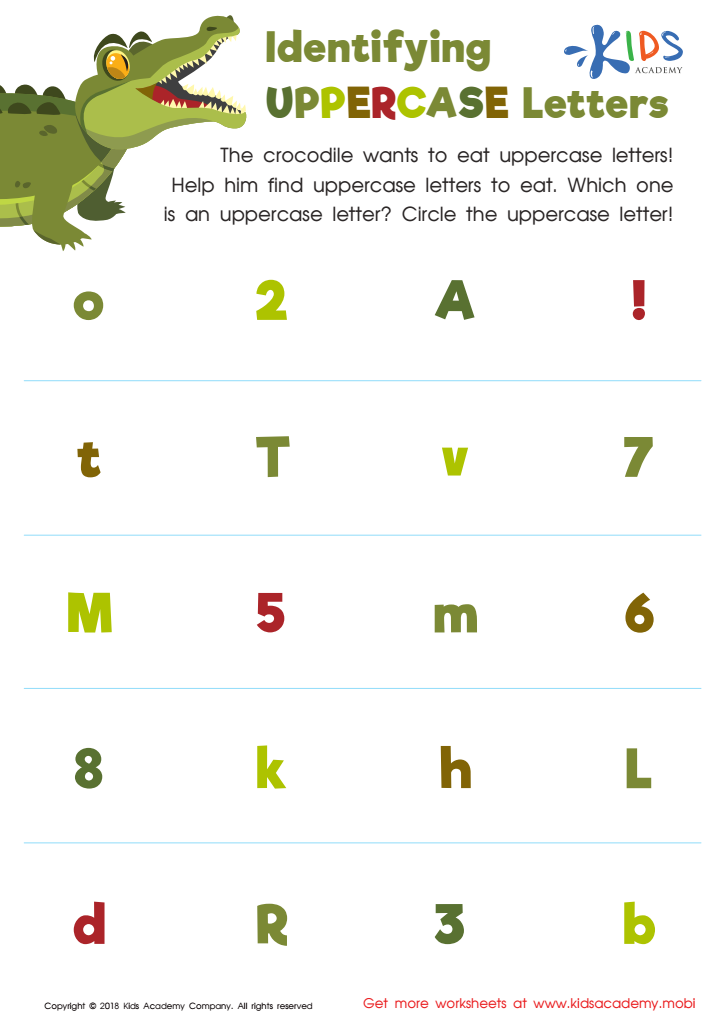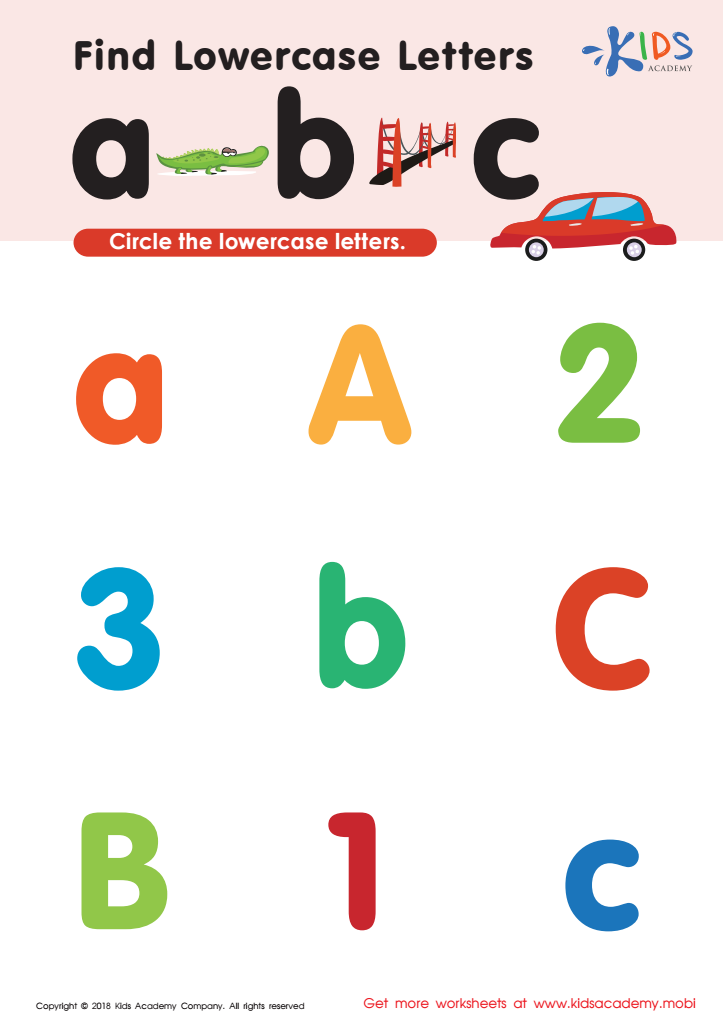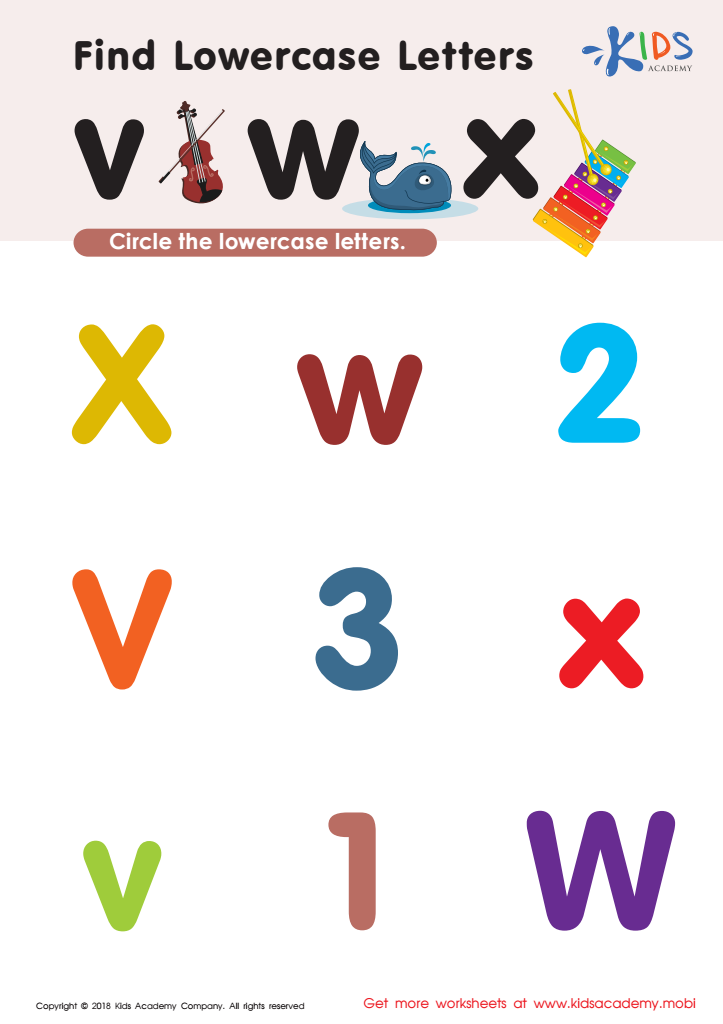Visual discrimination skills Letter Recognition Worksheets for 5-Year-Olds
5 filtered results
-
From - To
Enhance your child's visual discrimination skills with our engaging Letter Recognition Worksheets designed specifically for 5-year-olds! These worksheets are perfect for helping young learners differentiate between letters, an essential step in developing reading and writing abilities. Our interactive activities promote letter recognition through various fun exercises, including matching, coloring, and tracing. As children explore these worksheets, they build foundational skills while enjoying the process. Perfect for parents and educators, these resources make learning enjoyable and effective. Start your child’s literacy journey today with our thoughtfully designed visual discrimination worksheets that foster confidence and creativity in early learners!


Letter L Coloring Sheet


Find Uppercase Letters A, B, and C Worksheet


Identifying Uppercase Letters Worksheet


Find lowercase letters a b c Worksheet


Find Lowercase Letters v w x Worksheet
Visual discrimination skills and letter recognition are crucial components of early childhood education, particularly for 5-year-olds. These skills form the foundation for reading and writing, which are essential for academic success.
Visual discrimination involves the ability to notice differences and similarities in shapes, colors, and letters. For young learners, this skill helps them recognize letters and understand that each letter has its unique features, such as lines, curves, and angles. Mastering visual discrimination assists children in distinguishing between letters that look similar, like “b” and “d,” which can prevent common reading and writing mistakes as they progress.
Letter recognition allows children to identify letters on a page, making reading possible. When children recognize letters quickly, they can focus on blending sounds to form words, leading to improved reading fluency and comprehension. Parents and teachers should prioritize these skills through engaging activities, such as matching games, alphabet puzzles, and interactive storytelling.
By fostering visual discrimination and letter recognition, caregivers equip children with essential tools for literacy, boosting their confidence and instilling a love for learning that will benefit them throughout their educational journey. Understanding the importance of these skills enables parents and teachers to provide the guidance necessary for children's academic development.
 Assign to My Students
Assign to My Students















